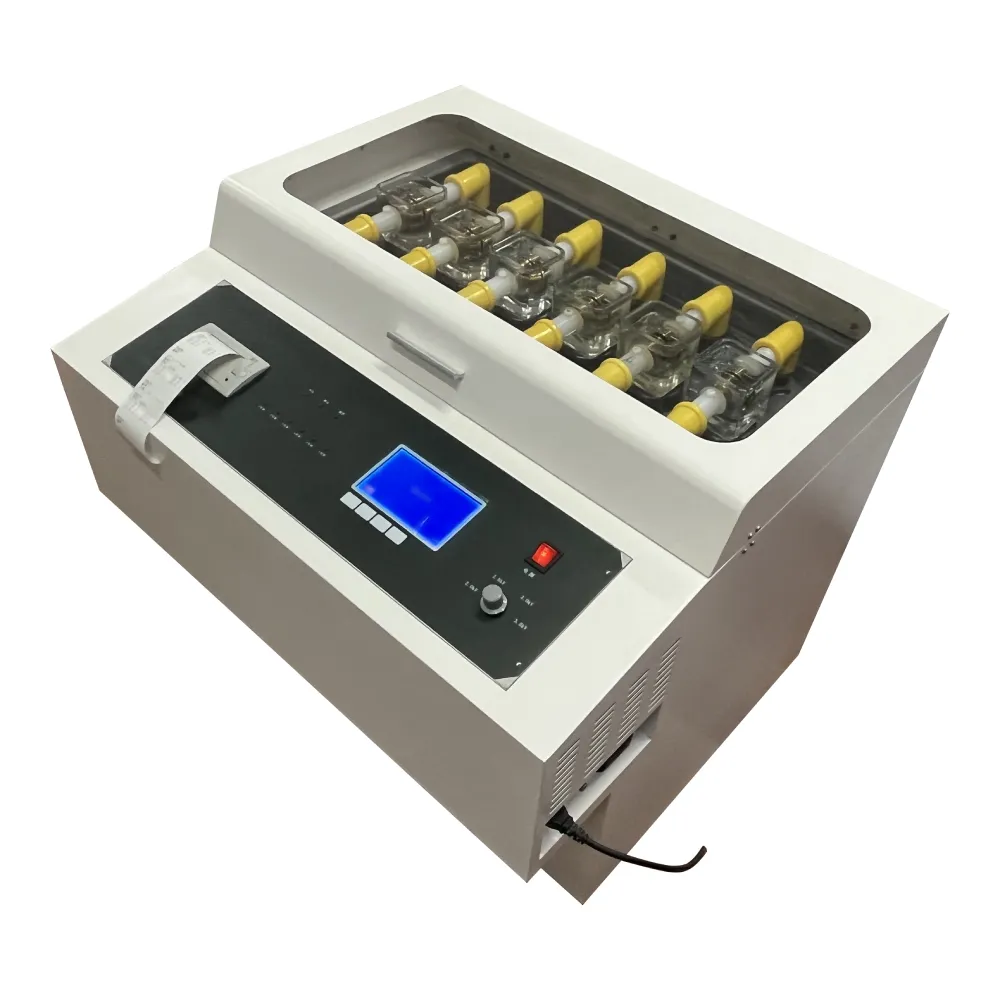 English
English


Kinematic Viscosity Measurement Device for Fluid Analysis and Testing Applications
Understanding Kinematic Viscosity Testers Importance and Applications
Kinematic viscosity is a crucial property of fluids that plays a significant role in various industrial applications. It represents the ratio of dynamic viscosity to fluid density, influencing how fluids flow under gravitational forces. To accurately measure kinematic viscosity, industry professionals rely on kinematic viscosity testers. This article delves into the importance of kinematic viscosity testers, their operational principles, and their applications across different sectors.
What is Kinematic Viscosity?
Kinematic viscosity is defined as the measure of a fluid's internal resistance to flow under the influence of gravity. It is typically expressed in centistokes (cSt) and can be derived from the dynamic viscosity (measured in pascal-seconds) and the density (measured in kg/m³) of the fluid. By understanding a fluid's kinematic viscosity, engineers can predict how it will behave in various scenarios, such as in pipelines, pumps, and during lubrication.
The Functionality of Kinematic Viscosity Testers
Kinematic viscosity testers are instruments designed to determine the kinematic viscosity of fluids under controlled temperature conditions. The most common methodologies employ capillary viscometers or falling ball viscometers. In a capillary viscometer, a fluid’s flow time through a narrow tube is recorded. The kinematic viscosity is calculated by multiplying the fluid's measured flow time by a specific constant related to the viscometer geometry.
Modern kinematic viscosity testers are often automated, incorporating features such as temperature control, digital interfaces, and software for data analysis
. This automation not only enhances precision but also reduces human error, making it easier for technicians to obtain reliable measurements.kinematic viscosity tester

Importance of Kinematic Viscosity Testing
The accurate measurement of kinematic viscosity is vital across multiple industries, including petrochemical, automotive, food and beverage, and pharmaceuticals. In the petrochemical sector, for example, kinematic viscosity helps in assessing the quality of fuels and lubricants. It ensures that products meet specific industry standards, optimizing engine performance and minimizing wear.
In the automotive industry, engineers analyze lubricants with respect to kinematic viscosity to provide superior protection against engine wear. For food and beverage products, viscosity affects texture and mouthfeel, making its measurement essential to maintaining consistent product quality.
Moreover, in pharmaceuticals, kinematic viscosity is critical for formulating liquid medications, ensuring that they have the correct consistency for effective delivery. The accurate measurement of viscosity also plays a role in compliance with regulatory requirements.
Conclusion
Kinematic viscosity testers serve as indispensable tools in the assessment of fluid properties across numerous industries. By understanding the flow characteristics of fluids, businesses can enhance quality control, improve product performance, and ensure compliance with industry standards. As technology advances, the evolution of kinematic viscosity testing will likely lead to even more sophisticated instruments, allowing for greater accuracy and efficiency in measuring this vital fluid property. The significance of kinematic viscosity cannot be overstated, and the continued use of these testers is crucial for innovation and quality assurance in various sectors.
-
Differences between open cup flash point tester and closed cup flash point testerNewsOct.31,2024
-
The Reliable Load Tap ChangerNewsOct.23,2024
-
The Essential Guide to Hipot TestersNewsOct.23,2024
-
The Digital Insulation TesterNewsOct.23,2024
-
The Best Earth Loop Impedance Tester for SaleNewsOct.23,2024
-
Tan Delta Tester--The Essential Tool for Electrical Insulation TestingNewsOct.23,2024





